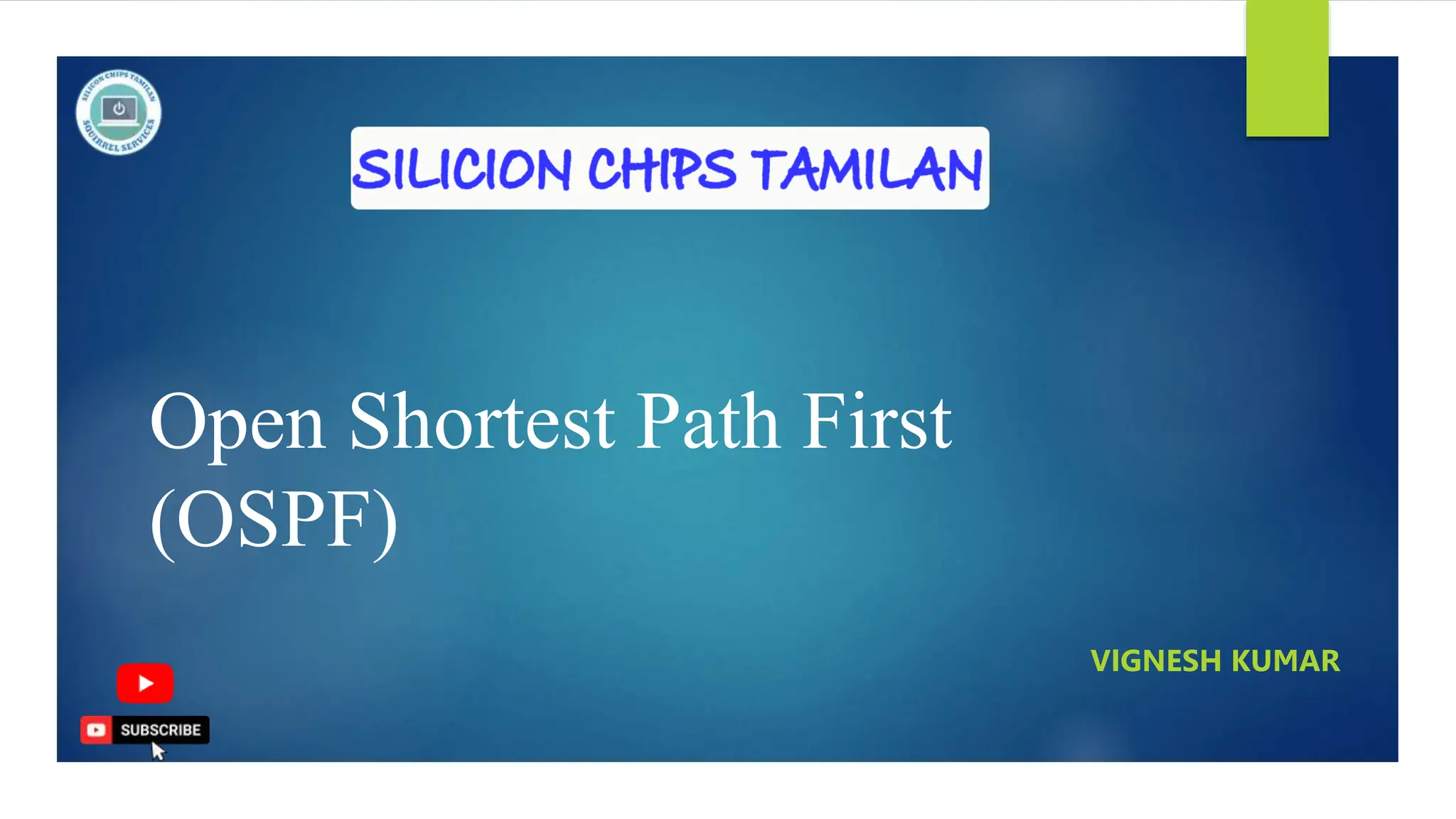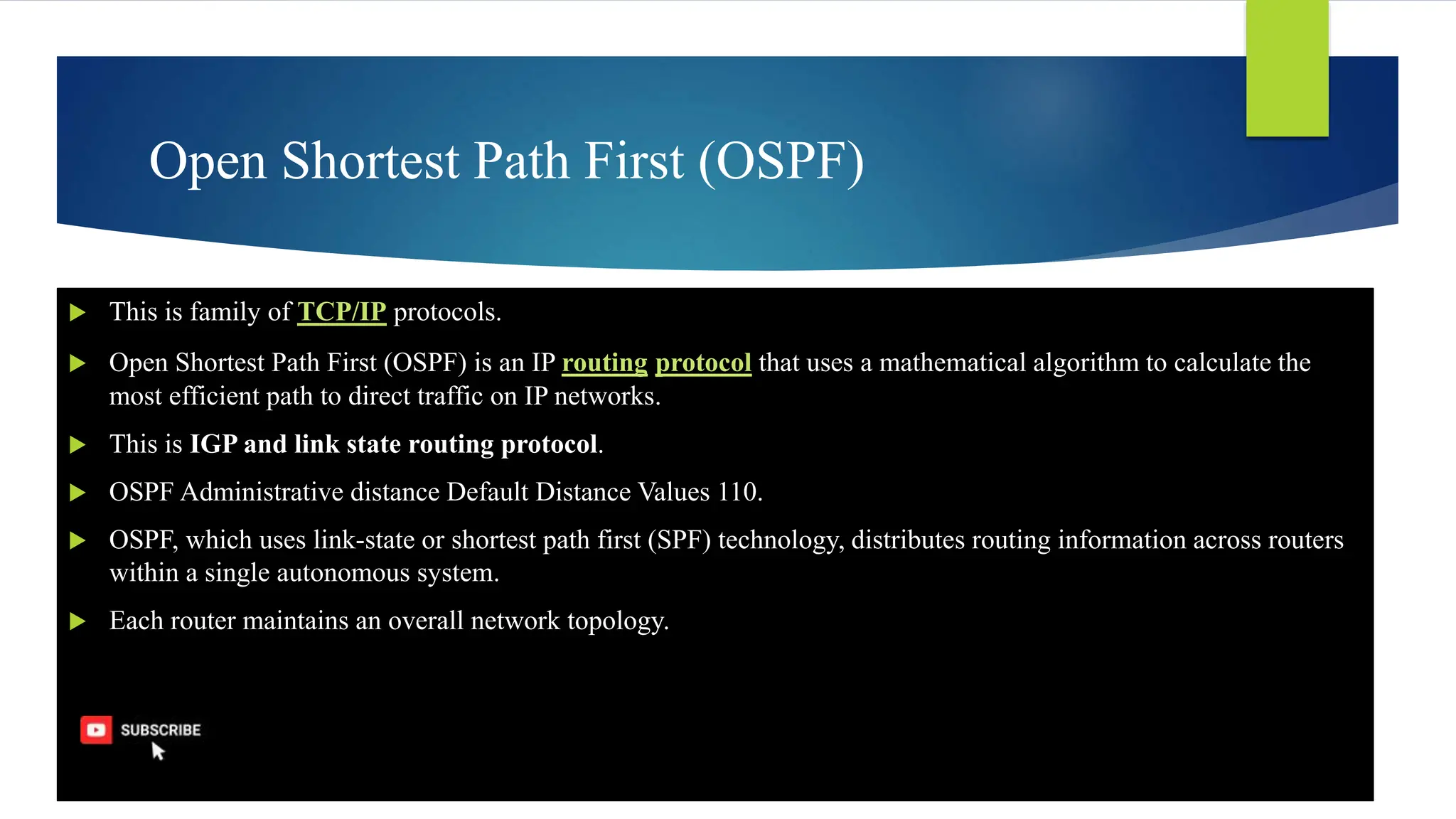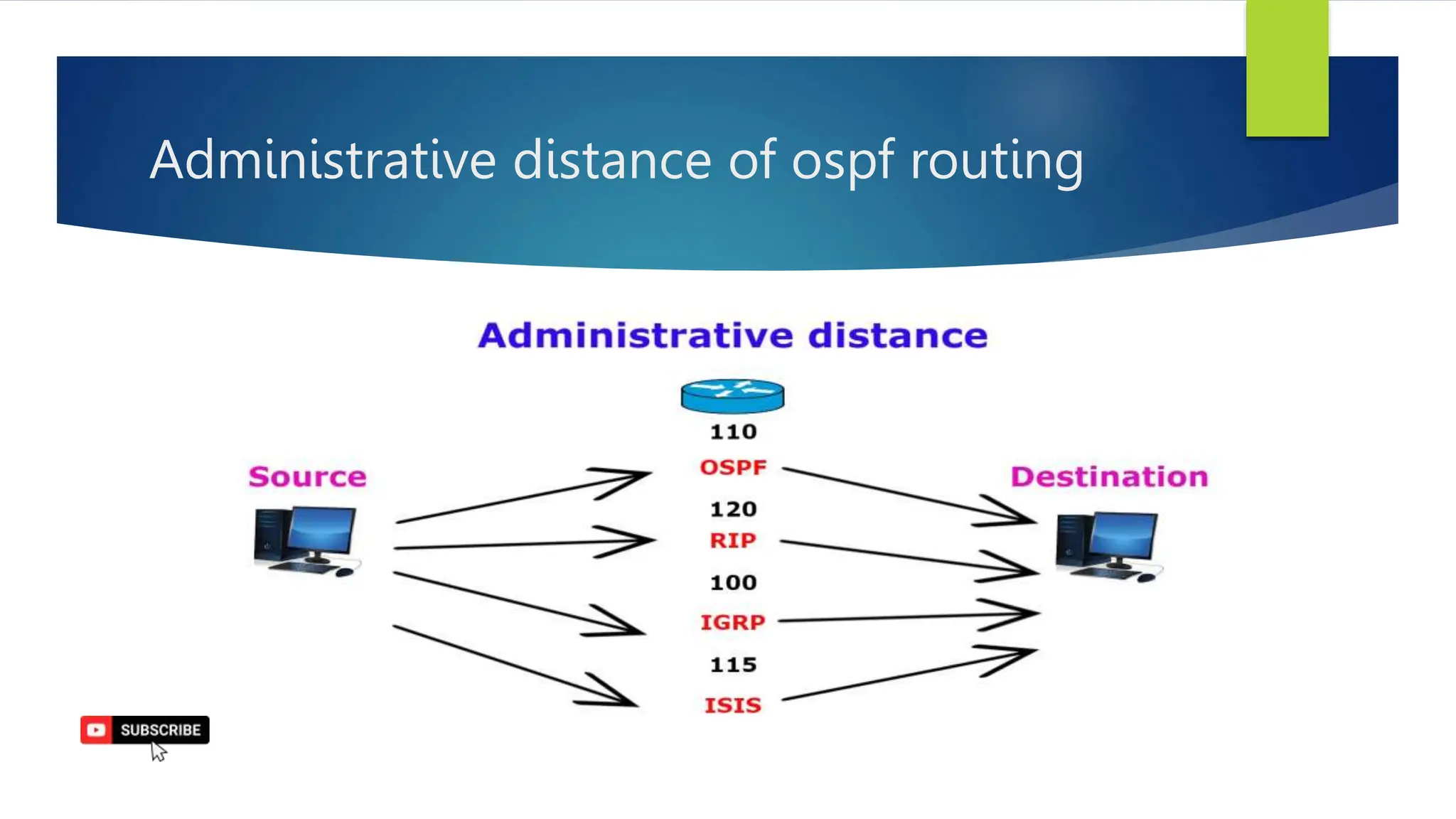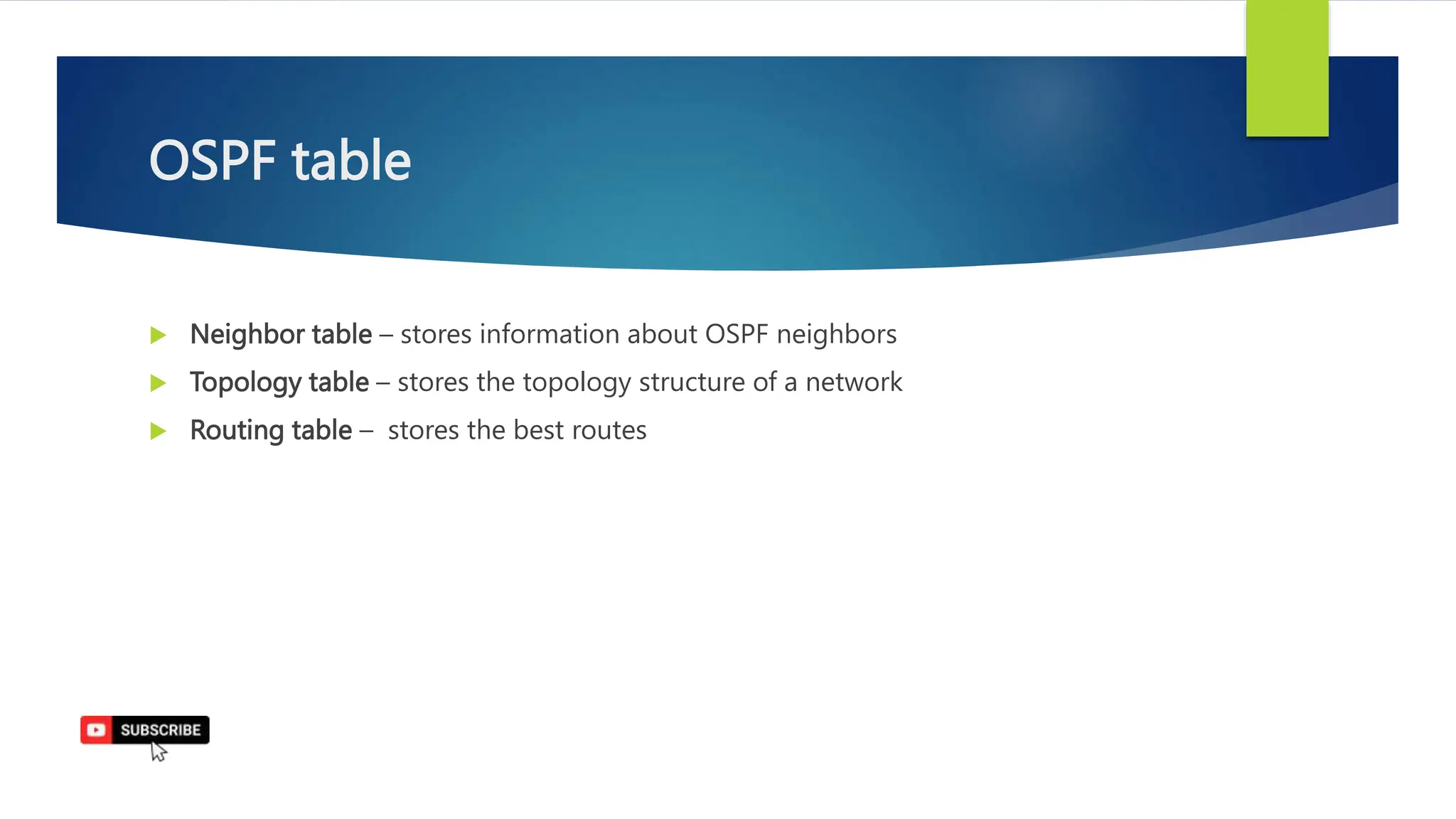Open Shortest Path First (OSPF) is an IP routing protocol that uses a mathematical algorithm to determine the most efficient routes for data transfer in IP networks, operating as a link-state protocol with a default administrative distance of 110. It involves a four-step process of neighbor discovery, measuring link costs, building and distributing link state packets, and evaluating shortest paths, utilizing areas to improve efficiency and reduce complexity. OSPF maintains various tables, including neighbor tables, topology tables (link state database), and routing tables to effectively manage routing information within a network.











